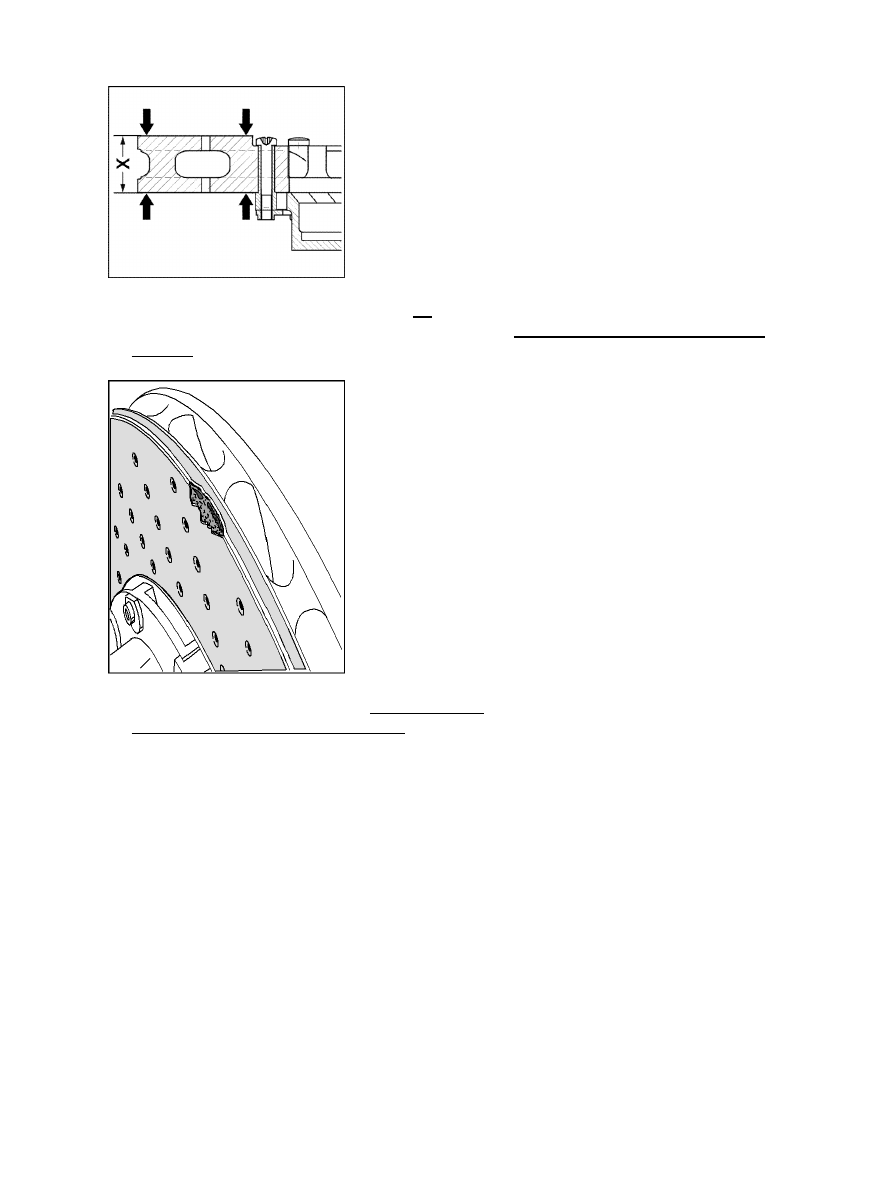Porshe 911 (997). Manual - part 286

Minimum thickness (x) of the PCCB brake disc
3. Check brake discs for minimum thickness -x- . The minimum thickness of the brake disc (example:
Min. Th. 33.7 mm) is stamped on the brake disc chamber → Checking brake discs for minimum
thickness.
Edge damage on PCCB brake disc
4. Check brake discs for edge damage -see illustration- (damage caused as a result of improper use)
→ Checking brake discs for edge damage.
General information on replacing worn PCCB brake discs
Three criteria governing the condition of the parts can make replacement necessary depending on the
wear of PCCB brake discs:
1. Surface changes in the brake disc friction surfaces (material fatigue/wear) at an advanced stage (indication
of wear: associated friction surface damage > 1 cm
2
).
2. Surface roughness of the brake disc friction surfaces too great (roughness depends on mileage and load).
3. Brake disc minimum thickness is not attained due to wear (material erosion due to friction).
In practice, all three forms of brake disc erosion usually occur.
•
Only in rare cases (in the case of long-term race driving brake loads/very high temperatures on the
friction surfaces) does the surface change so quickly that a premature brake disc change has to be
performed.
•
Blue discs on the brake disc chamber and/or strongly coloured brake calipers indicate a long-term,
sustained high load, on a racing circuit, for example.
•
Diagnostic system: reading out fault memory and activating systems
Basic information
1301